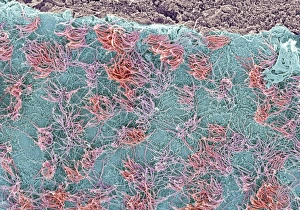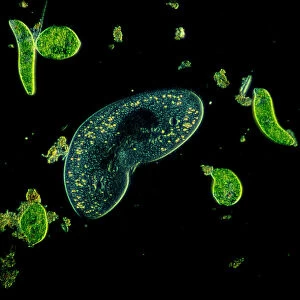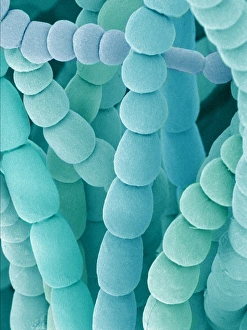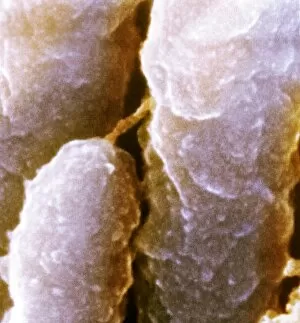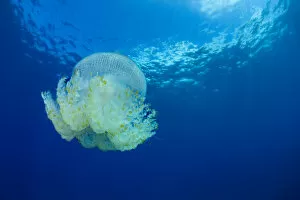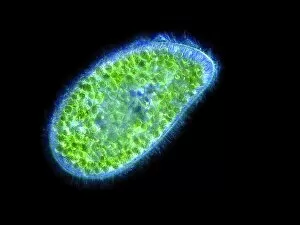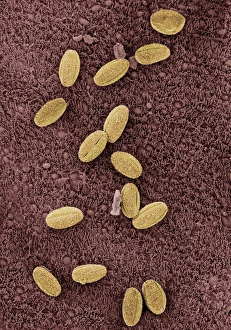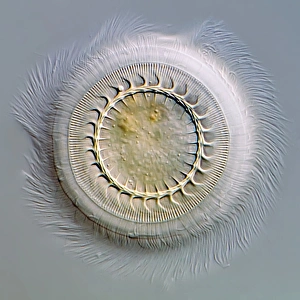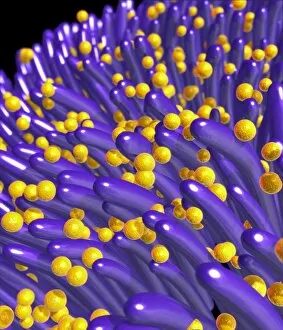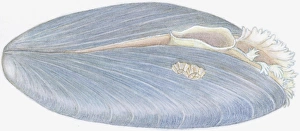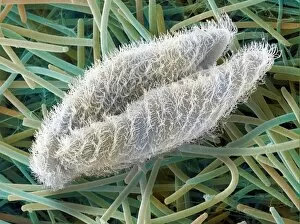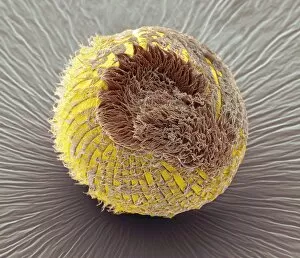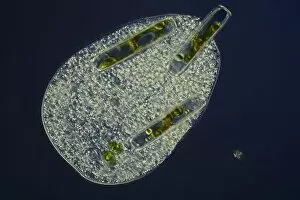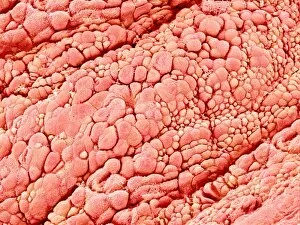Cilia Collection
Cilia: The Tiny Powerhouses of the Microscopic World Step into the fascinating realm of cilia
All Professionally Made to Order for Quick Shipping
Cilia: The Tiny Powerhouses of the Microscopic World Step into the fascinating realm of cilia, where these tiny hair-like structures play a crucial role in various organisms. Captured under the lens of a light microscope (LM) at an impressive magnification of x900, we witness their intricate beauty and functionality. In one captivating image, we observe kidney-shaped ciliates surrounded by Euglena sp. , showcasing the diversity within protozoans. These delicate creatures rely on their cilia for locomotion and feeding, highlighting their vital importance in this microscopic ecosystem. Moving to another scene, an SEM image reveals the brain surface adorned with countless cilia. These microscopic hairs serve as sensory receptors, allowing neurons to communicate and process information efficiently. Venturing further down our exploration path, we encounter trachea linings captured through scanning electron microscopy (SEM). Here, cilia take center stage once again as they tirelessly beat in unison to clear mucus and foreign particles from our respiratory system—a remarkable defense mechanism that keeps us breathing freely. Nature's artistic touch is revealed in stunning detail when examining spider lily flower stamens using SEM. Amongst vibrant petals lies a hidden world of intricately arranged cilia that aid in pollen capture and dispersal—an essential step towards plant reproduction. Delving deeper into the human body's wonders, SEM exposes brain linings where specialized cells extend numerous cilia. These fine projections facilitate cerebrospinal fluid circulation while also contributing to sensory perception—a testament to nature's ingenious design. The fallopian tube cells come into focus next; SEM captures their elegant structure embellished with clusters of meticulously aligned cilia. This arrangement ensures smooth transportation of eggs towards fertilization sites—nature's way of nurturing life itself. Picture No. 11014599 unveils yet another marvel—the inner ear hairs observed through SEM. Ciliated cells here enable hearing by converting sound vibrations into electrical signals, allowing us to appreciate the symphony of life.

